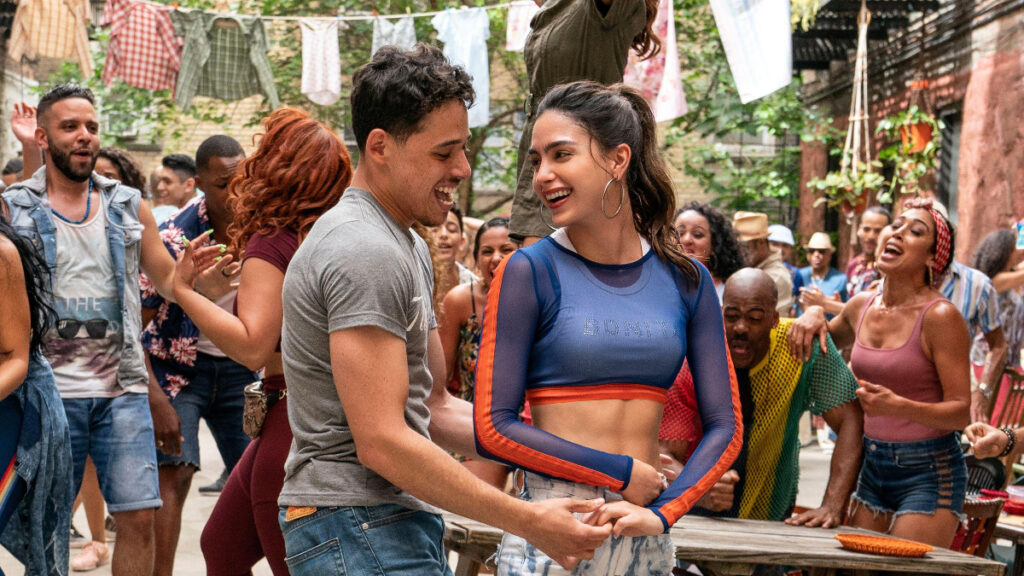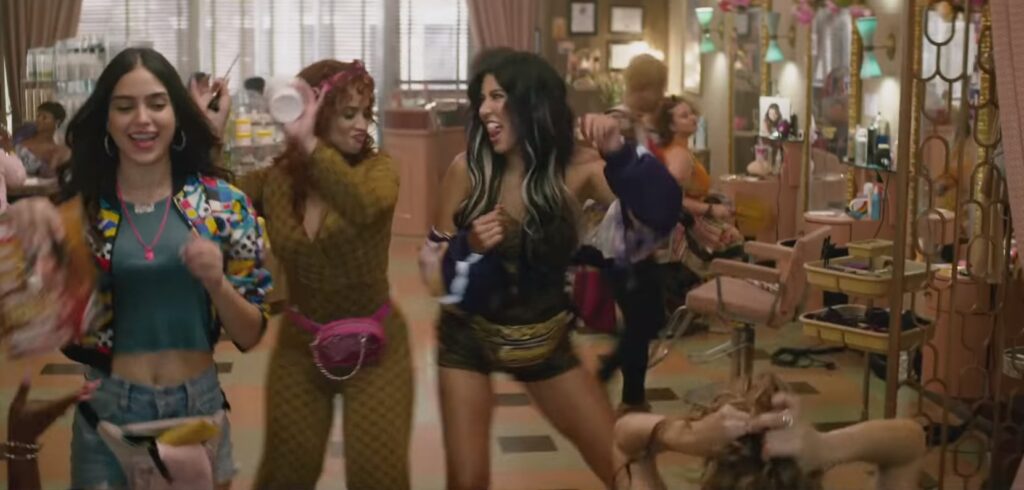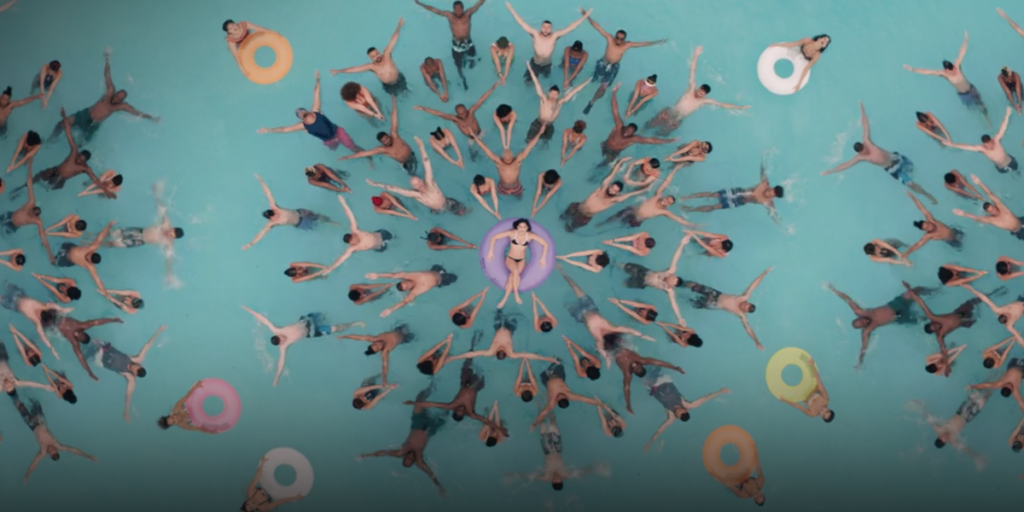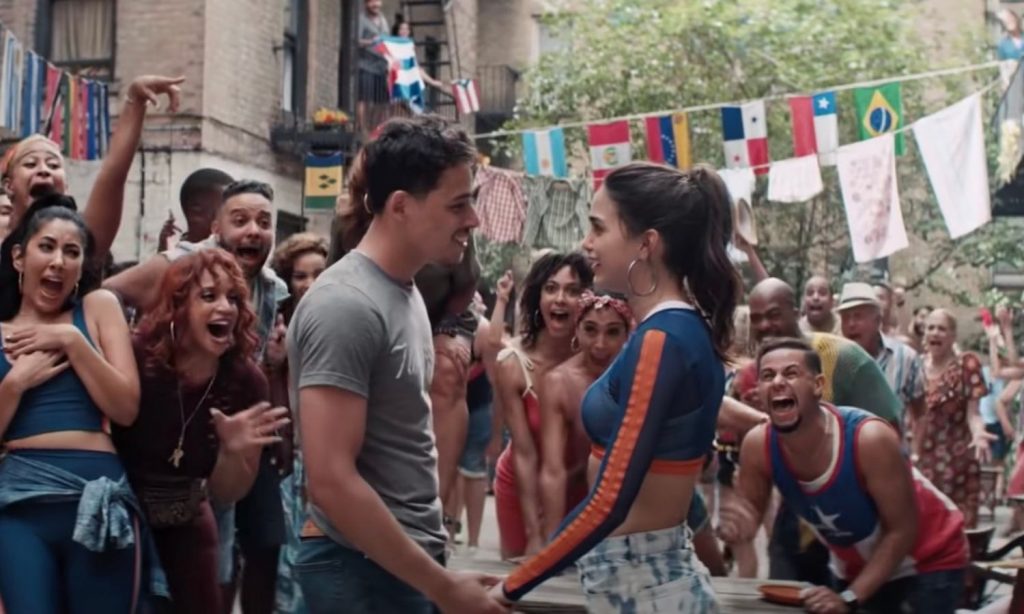Hollywood’s newest musical film is a celebration of community and cultural pride.
By Marco Antonio Gonzalez
While there have been a few films, and I do mean a few, inspired by and for Latinos in the Hollywood factory, never has there been a film, much less a musical, where Latinos are not only the subject matter but also the behind the scenes, front and center of a plot. The celebration of community, Latino cultural pride and heritage have rarely been depicted or delivered in such a majestic manner by Hollywood as it has been in Jon M. Chu’s much anticipated Warner Brothers’ adaptation of Lin Manuel Miranda’s Broadway hit musical In the Heights, which opens nationwide on June 11, 2021.

To be fair, there have been some notable and remarkable films in the limited Hollywood archives that have been reserved for us in a dark corner of their basement and that are worth mentioning as legacy Latino films; some of these iconic films include Zoot Suit, Mi Familia, Stand and Deliver, La Bamba, El Norte, Selena, Frida, The Motorcycle Diaries and most recently, Disney’s Coco. But for the most part, our stories have been relegated to play second fiddle or simply stand in as extras on the sideline of American cinema–Think West Side Story, whose only redeemable element is the presence of our iconic Rita Moreno as the only real Latina in a reinvented Latino-themed Romeo and Juliet Broadway musical-turned-film.
In the Heights stars Anthony Ramos (A Star is Born, Hamilton, Honest Thief, In Treatment), Corey Hawkins (Straight Outta Compton, Kong: ), Melissa Barrera (Vida, Scream, and Carmen), Lin Manuel Miranda, Jimmy Smits, Marc Anthony, singer/songwriter Leslie Grace in the lead role of Nina and Olga Merediz, who is the only cast member from the original Broadway musical that captures the essence of community and family in her reprised role as Abuela.

In the Heights marks a dramatic and most defined line between visibility and invisibility of the Hispanic experience in America as told by Hollywood, and while it may have taken some time to get here, it makes a bold statement about the importance, contributions and influence of Latinos in America. In the Heights may take place in New York City’s Washington Heights, but it unites us all by subtly and elegantly embracing all Latinos under one beautifully wrapped bow; it could be the immigrant story of any of our families. Yes, language and culture are perhaps a common thread between the diverse and complex Latin American diaspora in the U.S., but in the end, as members of this rich and mixed culture, we understand that we all inevitably experience our “Latinoness” in a very unique idiosyncratic nationalist way, without failing to accept the fact that we still belong to a larger tribe, and that is the Latin American tribe, where the triumph of one is the triumph of us all. It’s hard for me as an American born Mexican to not move my hips on cue with the first note or beat of a cumbia or salsa track, or the contagious rhythms of Colombian vallenato, or feel pride when I see the Aztec dancers on Olvera Street in downtown Los Angeles or hear the dazzling and intoxicating notes of a Brazilian samba; that’s just who we are!
“In the Heights is more than a movie to me,” said Barrera exclusively to Latin Heat. “It represents honoring our people, it represents honoring our culture, it represents honoring generations of our ancestors that have long felt erased from the narrative and I love that the world will get to see our community in all of our complexity, in all of our beauty and glory too, and to see us celebrate each other and lift each other up because I feel that’s the essence of the Latinx community.”
When you watch In the Heights for the first time, you feel that type of sensation and a warm fuzzy feeling, and you forget about your own Mexicanness, Puertoricanness (if those are even words), or your own family’s immediate national heritage and you embrace that rich culture that we all call Latino (or Hispanic, Latinx or whatever term you prefer), a culture that is expressed by this musical film in an explosion of color, music, dance, emotion and raw honesty. It took two influential and talented people of color, Miranda and Chu, to get Hollywood to finally tell our story with dignity and respect.
In the Heights, the musical film is the product of two brilliant minds that bring to life our Latin experience in the U.S., the life of hard-working immigrant families who have been a quintessential part of the American fabric and the greatness of this nation. It is also a celebration of community, family and cultural pride, and heritage. The film is brilliantly directed by Chu as a musical of colossal proportions, with a crescendo effect of color and music that result in an explosive cinematic masterpiece with musical choreographies and numbers that are reminiscent of some of Hollywood’s most epic musicals of yesteryear.
While the Broadway musical focused on the life and aspirations of Nina (played by Dominican singer Grace) and her personal conflicts between fulfilling her academic dreams and leaving her barrio behind, the film actually pivots its attention to the romantic storyline between the film’s lead characters Usnavi de la Vega (Ramos) and Vanessa (Barrera). The on-screen chemistry between Ramos and Barrera is pure magic and seamless. You believe their romance and truly fall for their love story from the opening of the film to the last frame that closes this unapologetic musical.
In her film debut, Barrera steals every scene she appears in and unravels her singing, dancing and acting abilities in a similar fashion that Moreno must have done in 1961 when she swept Hollywood off its feet with her performance as Anita in West Side Story, which won her an Oscar for best actress in a supporting role that year. Barrera is not the next anything, she may very well be Hollywood’s newest quadruple threat, singer, actor, dancer and perfectly bilingual, a feat not seen or accomplished since Moreno’s successful and legendary career in entertainment. “I’m so excited for all the world to see us, to see our stories and to empathize with us, because I feel like we’re so much more similar than we are different,” said Barrera.

The film opens with the title track of “In the Heights,” and it is then that you immediately realize that you’re in for a very exhilarating and unforgettable cinematic experience because what comes next is an amalgamation of stellar choreographies, great music and a beautiful story that will endure the test of time. The grandeur and colorful performances of the “96,000” musical number in the community swimming pool are simply mesmerizing, and perhaps one of the most memorable moments in recent cinematic splendor. It truly is difficult to pick just one favorite moment, because Chu practically makes any plot fragment a gem without even trying, as is the case with the musical number “When You’re Home” with Hawkins and Grace dancing away on the side of an apartment building with the sunset as a golden backdrop or “It Won’t Be Long Now” with Barrera and Ramos. The art direction and the clever, timely insertion of the Dreamers storyline, which is not part of the original Broadway musical, are undoubtedly both carefully crafted characteristics that give the film and its characters a breath of depth and dignity you would never come to expect from a musical.
Like Barrera said, In the Heights is more than a movie, it truly is an experience, the collective narrative of a group of people that have long been ignored by and intentionally left out of the Hollywood storytelling machine. In the Heights is the story of all Latinos living in the U.S. and a celebration of our communities, our cultural heritage and our powerful voices. In the Heights is truly the story of all of us.
Featured Photo: ‘In the Heights’ (Credit: Warner Bros.)



